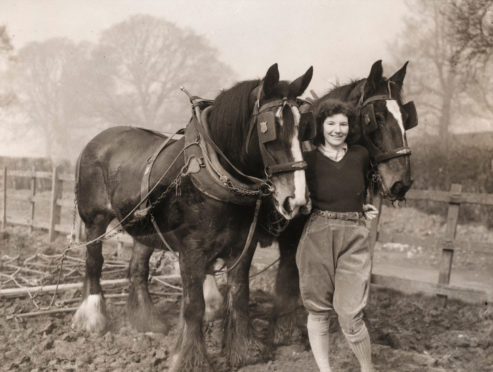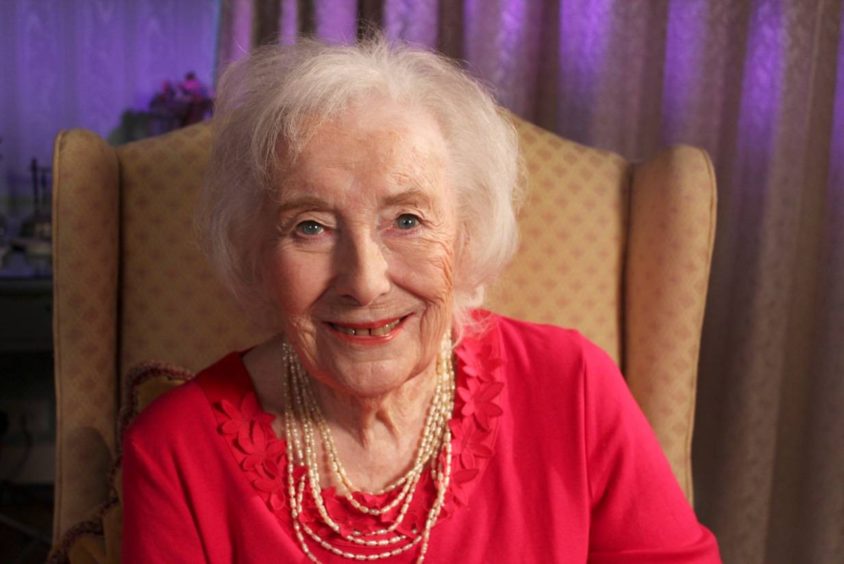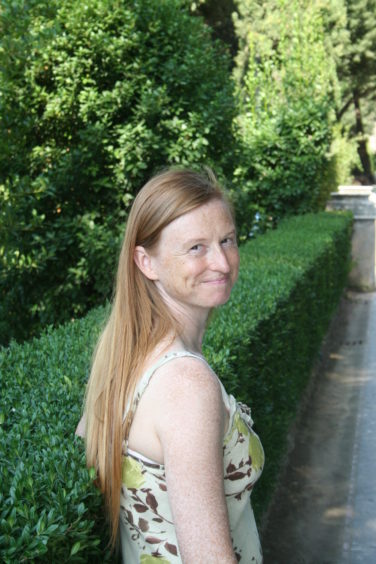They were a pivotal part of the Second World War and proved instrumental in the campaign to keep Britain digging for victory.
And more than 8,500 members all across Scotland, from Ballater to Bathgate and Clochan to Callander, were among the stalwart recruits to the Women’s Land Army.
The WLA was reformed in June 1939, just a few months before the outbreak of hostilities, and quickly filled the gap in the farm workforce left by the hundreds of thousands of men who were called up to fight for the Allies.
In Scotland, girls and women were recruited from the age of 17, but some were as young as 14.
They came from all kinds of backgrounds and all walks of life.
Those who needed training were sent to and billeted at training camps such as Shandford Lodge, near Brechin, and subsequently posted throughout Scotland to wherever they were needed.
Moray and Aberdeenshire were two of the most important areas for the WLA – Britain’s first monument to the work of the Women’s Land Army in two world wars was unveiled at Clochan in Moray, on the Fochabers Crown estate, in 2012.
This was the inaugural UK recognition of the achievements of the wartime Land Girls.
Britain imported more than two-thirds of its food in 1939 and, during the conflict, Germany was sinking vast amounts of shipping bound for Britain in the Atlantic in an attempt to starve the country into submission.
Producing food domestically on a huge scale was therefore critical.
At its peak in 1944, more than 80,000 female workers – who were known as ‘Land Girls’ – had joined the WLA and were producing 70% of the nation’s food.
They worked closely with working horses, which outnumbered tractors by 30-to-one on British farms at this time.
Geoffrey Dennis, the chief executive of SPANA (Society for the Protection of Animals Abroad), which provides free veterinary treatment to working animals in developing countries, believes it is overdue for both the women and the horses to be accorded greater credit for their efforts.
He said: “The contribution made by the Land Girls and the horses they worked alongside during the Second World War was monumental.
“At a pivotal time in our history, the Land Girls and the animals that stood side-by-side with them helped to fuel the war effort on the home front.
“We owe so much to this army in the fields.
“Working animals, such as horses, donkeys and mules, are still vital to the survival of people in the poorest communities around the world today.
“Often working closely with women, these animals are a lifeline – helping to provide food, water and livelihoods.
“It’s important that we also recognise the contribution of this silent workforce – both then and now.’
Dame Vera Lynn, the singer who became the ‘Forces Sweetheart’ with such songs as ‘We’ll Meet Again’ said: ‘The women of the WLA are without question among the unsung heroes of the Second World War, stepping into traditionally male roles and securing Britain’s food supply throughout the conflict.
“When the WLA was reformed at the start of the war, Britain was producing less than a third of its food, but – thanks to the enormous efforts of the Land Girls – this figure had risen to 70% by 1943.
“At the beginning of the war, horses outnumbered tractors by 30 to one on Britain’s farms – and the Land Girls couldn’t have succeeded without their horsepower.”
Historian Ruth Goodman, whose television series Wartime Farm highlighted the work of the Women’s Land Army, said: ‘It’s hard to overstate the contribution that the Women’s Land Army made to Britain during the Second World War.
“Women from across the country stepped up to fill the gap left by men going off to war.
“Many of these women had never lived away from the city, but they were immediately thrown into every variety of farm work – from using horse-driven ploughs, to milking cows and delivering produce on a pony cart.
“At a time when Britain was besieged and its food supply was under serious threat for years, the Land Girls and the horses that worked alongside them played a critical role in helping to feed the nation.”


